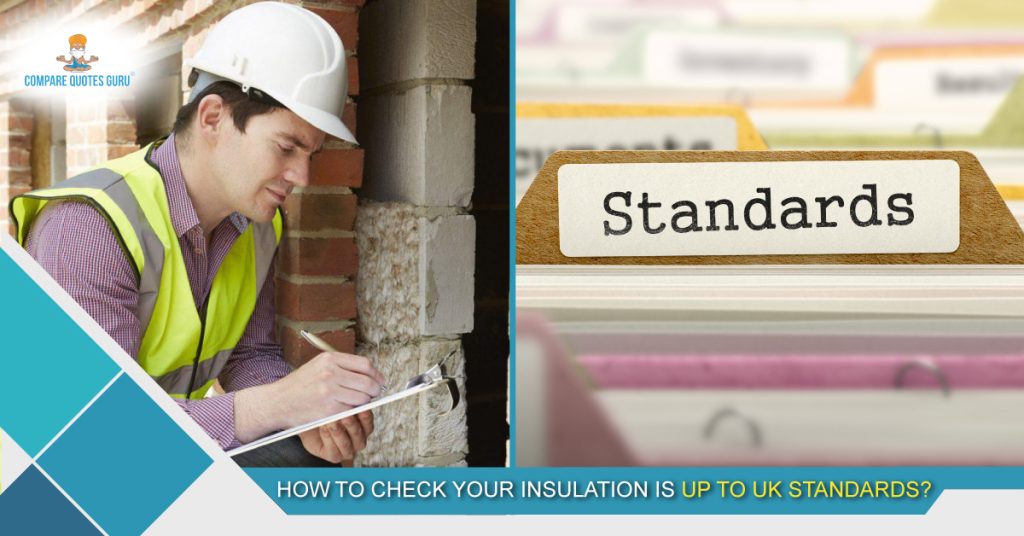The necessity of insulation in your home cannot be understated. Insulation can save money on heating bills, reduce dampness and mildew, and improve living conditions. Similarly, poor insulation can end up extra cost, potentially cause damage to your home, and threaten your health in some situations. Insulation inspection should always be performed by an expert, so if you suspect faulty insulation or have any questions, so contact us immediately for more detailed information.
Common concerns with roof insulation and loft insulation thickness regulations
In 2006, the law in the United Kingdom regarding loft insulation was changed to assist in minimising carbon emissions caused by poorly-insulated houses. The depth of roof insulation is governed by laws. However, laws place a greater emphasis on heat loss, safety, and insulating properties than on the materials that must be used. To begin, carefully ascend to the roof space by using the proper safety equipment which includes a rope ladder on flat ground, eye protection, and a mask. By sight, you should be able to determine the appropriate loft insulation qualities:
- Do you have any insulation at all?
Despite regulations, there are times when loft insulation is completely missing.
- Does it go all the way up to the ceiling?
Old roof insulation might become deteriorated or fall off over time. Loft insulation was perhaps placed hastily in the first place in older structures.
- Is the roof insulation adequate?
The loft insulation standard width is 270mm for specified materials. Because this can be difficult to determine, the insulation will be the same width as or thicker than the joist.
- Is it too uneven, has slumped, or appears squished or tucked in?
This could happen to out-dated insulation, particularly if it was put incorrectly. With modern blowing foam insulation or Icynene® insulation, this is quite rare.
- Does it appear to be moist or damp in certain areas?
Check for discolouration or a musty odour.
- Is there any evidence that birds or even other animals have harmed it?
You can look for animal waste, nests, noises, and insulation holes. In the majority of these cases, you will need to replace all of the loft insulation. Call us if you do have any questions concerning the concerns addressed above. We specialise in Icynene® spray foam insulation, an open-cell spray foam insulation that is ideal for lofts and can help you save a lot of money on your heating bills.
Examining the insulation in cavity walls
It is far more difficult to determine whether a cavity wall is effectively insulated. However, there are a few easy ways to determine whether your wall insulation is appropriate or not:
Do you think this wall is colder than the others?
This could indicate that the wall isn’t well insulated
Do you hear a hollow sound when you knock on the wall?
If the sound is hollow, you may well have a cavity wall, which is frequent in structures constructed after 1950. There’s nothing between these two walls but air. They can be supplied with Icynene® spray foam insulation and installed in less than a day with minimal damage to the wall.
Do you have any dampness, mould, or discolouration?
This is frequently the result of inadequate or improperly placed insulation. If you are still not sure, removing the power socket cover is the best approach to find out without hurting the wall. Before you do this, make sure the room’s electricity is turned off and that you’ve done all necessary safety precautions. Close the cap, shine a light in the hole, and check for insulation. If you see some, you can even unscrew section to inspect the material and condition.
How can you know if your home is properly insulated?
- Cold regions and draughts
Draughts and breezes from the outside are signs that your home needs to be draught-proofed. If you can’t afford double-glazed windows right once, you can add a tiny layer of insulation to your windows with adhesive clear plastic.
- Temperature Changes
When the heating is turned off or on high, the house becomes instantly chilly, indicating that heat is exiting quickly. Insulation keeps heated air inside your house warm, so if your house’s temperature decreases quickly, it’s a sign it’s not properly insulated.
- Snow and ice dissipate quickly off your roof.
Have you ever observed that your house is among the first to remove any snow or frost that has accumulated on its roof? This is a clear indication if your roof isn’t well insulated, allowing heat to escape.
- Increasing energy costs
Although energy costs climb each year, it is a good idea to keep an eye on your central energy bills for surges as this could indicate that your home is not conserving heat effectively.
You may do some analytical research and compare normal expenditures of similar-sized homes to discover if you are using a lot more energy to heat your house. Have you performed a fast self-inspection of your insulation regulations and discovered any discrepancies. Do it today and find out if your house is really up to par with the UK standards.

